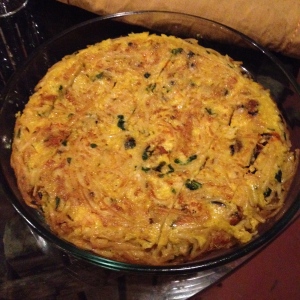Ilaria Petitto and Francesco de Rienzo (DonnaChiara Winery) and Massimo Alois and Talita de Rosa (Michele Alois Winery) invited Michele and I and a friend to have lunch with them. Last year when Michele and I visited the Alois winery we had a fantastic lunch prepared by Talita de Rosa, which I wrote about in a blog.
This year they decided to take us to Vairo del Volturno, a restaurant with one Michelin star since 2007. It is located at Via IV Novembre 60, Vairano Patenora, Caserta. 
The chef, Renato Martino, made a special lunch for us based on the local ingredients from around the Caserta area. With it, we drank the wines from DonnaChiara and Michele Alois Wineries.
DonnaChiara wines
The winery is located in Montefalcione in the Irpinia area near Avellino
Greco di Tufo DOCG 2017, 100% Greco. The soil is tufaceous, training system is guyot, there are 3,300 plants per hectare and the harvest takes place the second half of October. A soft pressing of selected grapes takes place and then a cold decanting of the must. Fermentation is at 57 to 60F. Malolactic fermentation does not take place. This is an elegant wine with good structure with hints of pear, apricot, citrus and a touch of pineapple. This is a wine that can age for 15 years or more. It is one of my favorites.
To go with the wines, the chef prepared a series of small seafood dishes, including assorted marinated crudi, and bufala mozzarella topped with anchovy. Though I have always enjoyed these wines with traditional Neapolitan food, with these combinations, the chef showed how well they can go with contemporary dishes.

Campania Aglianico IGT 2016 made from 100% Aglianico. The soil is clay, the training system is guyot and the harvest takes place in the first half of November. Malolatic fermentation takes place in barriques for 3 months. Ilaria said this is a fresh and pleasant wine due to a small number of “follature” (pumping over) and to a short period of maceration on the skins. It is a wine that is elegant, warm and perfect with many different foods. The wine is fruity with hints of blackberries, strawberries and a touch of toast.
There was pasta of course, large tortelloni filled with local pork.
Taurasi DOCG 100% Aglianico 2016 The soil is clay and the training system is guyot. There are 4,000 plants per hectare and harvest takes place the first week of November. The wine is aged for 12 months in 225 liter French barriques and remains in the bottle for another 24 months before release. The wine has hints of blackberry, plum, cherry and a touch of cacao. The use of barrique was subtle and did not mask the character of the wine.
Taurasi Riserva 2013 DOCG made from 100% Aglianico. The soil is clay, training system is guyot and the harvest takes place the first half of November. This one is produced only in the best vintages. There is manual grape picking, a careful cluster selection followed by a soft pressing of the grapes. Maturation is on the skins for 20 days. Malolactic fermentation takes place in barriques. This is a full intense wine with hints of blackberry, plum, cherry and coffee notes. It is on its way to becoming a great wine with a little more bottle age.
Michele Alois wines The winery is located at the foot of the Caiatini Mountains in the province of Caserta.
Pallagrello Bianco “Caiati” 2013 100% Pallagrello Bianco from a 2.13-hectare vineyard at 280 meters, soil is volcanic with minerals. The training system is guyot, there are 4,800 plants per hectare and the harvest is in the middle of September. Fermentation takes place on the lees for 30 days. Malolactic fermentation is in stainless steel at a controlled temperature. The wine remains in the bottle for 4 months before release. It has hints of almonds, citrus fruit, melon and grapefruit with a long finish and pleasing aftertaste.
Pallagrello Nero “Cunto” Terre del Volturno IGT 2015 100% Pallagrello Nero. The vineyard is 1.46 hectares, the soil is volcanic with minerals, guyot training system and there are 5,200 plants per hectare. The harvest takes place the first weeks of October. Vinification in stainless steel with cold maceration on the lees and malolactic fermentation is in stainless steel. The wine is aged in used French barriques for 12 months and an additional 6 months in barrel before release. This wine has hints of berries, especially blackberries and cherries and a long finish.
The lamb was a local variety prepared two ways roasted and grilled, and topped with hazelnuts.
Casavecchia “Trebulanum” Terre del Volturno IGT 2015 100% Casavecchia from a 1.5-hectare vineyard at 180 meters. The soil is volcanic with minerals, training system is guyot and there are 5,200 plants per hectare. Harvest is in the first weeks of October. Vinification is in stainless steel tanks with maceration on the skins for 20 days. Malolactic fermentation in large barrels (botti) for 18 months and it is in botti for 12 and 6 months in bottle before release. This is a big wine with hints of licorice, tar and smoke, a very long finish and a pleasing aftertaste.
After lunch we went to the Alois winery where we tasted barrel samples of the Pallagrello Bianco and Nero and the Casavecchia with Massimo Alois
We ended this most perfect afternoon at the winery with a wonderful version of Baba, a yeast raised pastry filled with pastry cream and soaked in rum syrup, which Illaria had brought from a bakery in Avellino.























